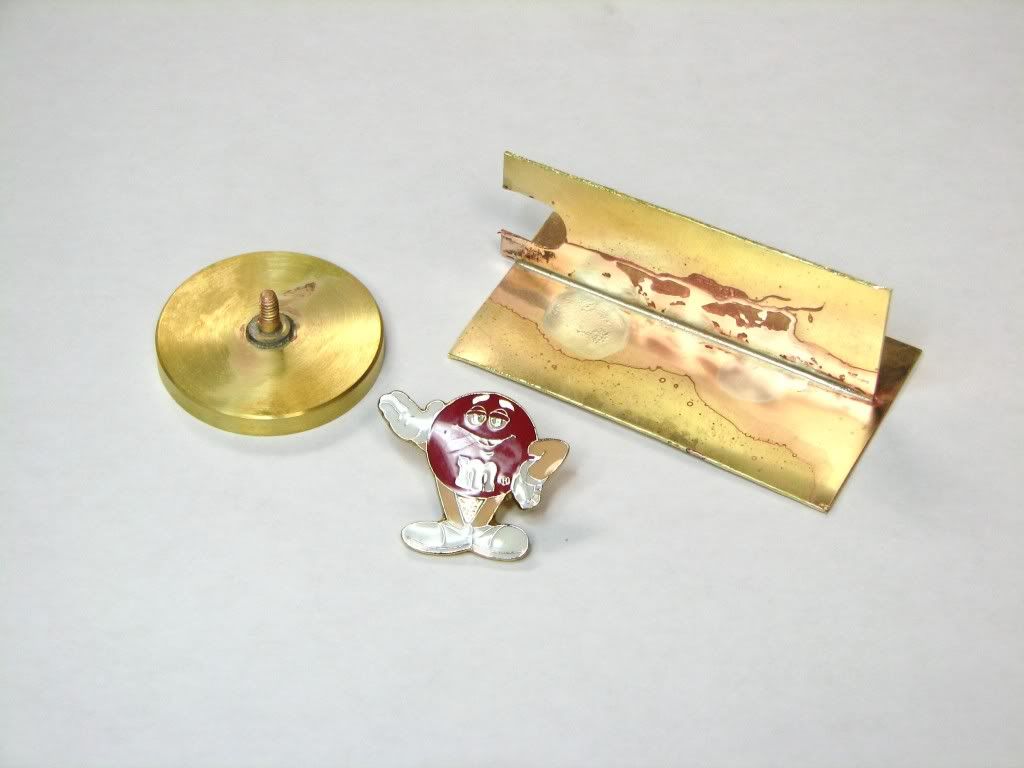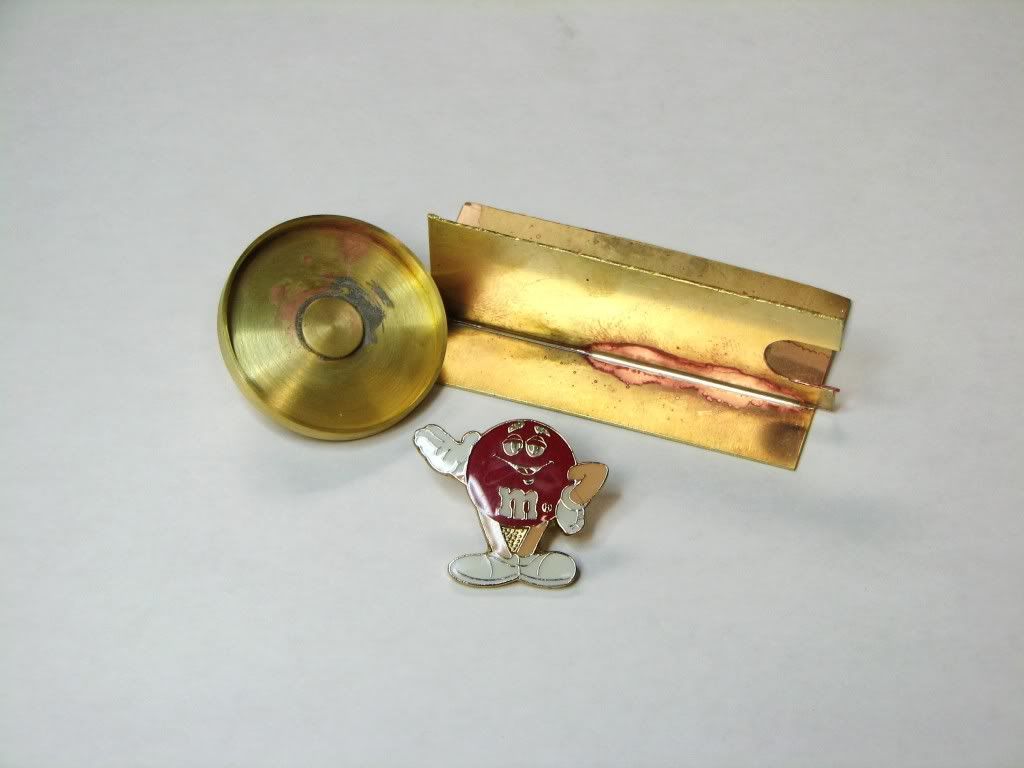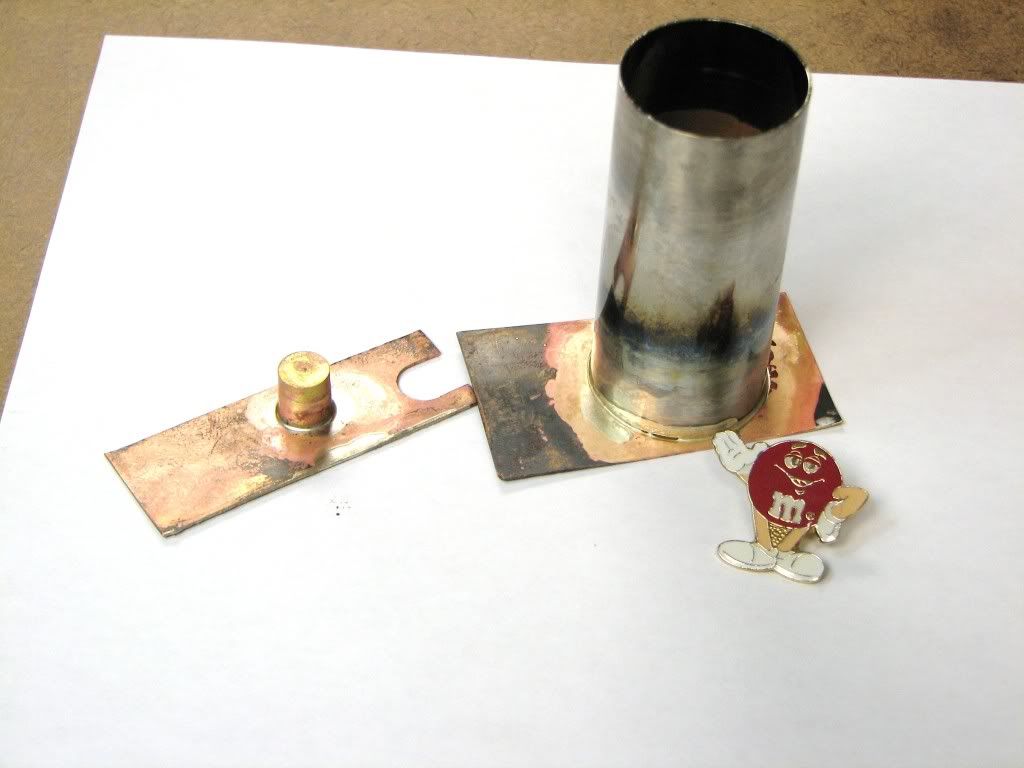A little practicing today...
I wired up a bit of brass sheet to another. Fluxed it...then heated it up. I had the solder wire in my hand. I went at it too early. Hot enough to melt a bit of wire off but not hot enough yet to wick. So the solder bit fell on the part and laid there a while. Happened twice.
Then it got hot enough and like magic the solder wicked into the corner.
You can see the two small areas where the solder first pooled.
On the left is the boiler end sheet I did last weekend after pickling. The stud looks kind of funky but it's the lighting.
Here's the back sides.
You can tell the one end got more heat than the other...but the solder is all along the joint.
I was somewhat surprised how bright the brass got from the flux melting/burning off. I have no idea how well that will clean up.
I'm thinking the parts on the loco are going to get pretty discolored. I'm less concerned about how it ends up looking...I really hope it runs. Still...it'd be nice to keep it as good looking as I can. (That way if it doesn't run...it's good to look at. ;D -- yeah yeah...I hear you...it'll run.)
Next run I'll try forming the solder wire instead of poking with it.
By the way...the flux seems a bit more liquidy than the stuff you used Dean. Not that it should matter once it gets hot. I imagine I can the stuff I got from Harris as well.
Is it worth hitting the boiler sheet with some brasso to see what cleans up?




















![DreamPlan Home Design and Landscaping Software Free for Windows [PC Download]](https://m.media-amazon.com/images/I/51kvZH2dVLL._SL500_.jpg)











